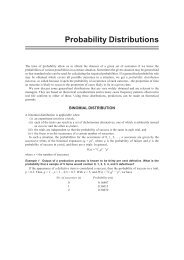International-Business-Dr-R-Chandran-E-book
International-Business-Dr-R-Chandran-E-book
International-Business-Dr-R-Chandran-E-book
You also want an ePaper? Increase the reach of your titles
YUMPU automatically turns print PDFs into web optimized ePapers that Google loves.
142<br />
<strong>International</strong> <strong>Business</strong>- <strong>Dr</strong>. R. <strong>Chandran</strong><br />
1950s are already listed as advanced economies. Despite short-term<br />
growth for the region are still valid. Their shares in global markets are<br />
eating slowly the shares of developed countries especially in plastic,<br />
rubber, medical and electronic components.<br />
Larger economies, notably China are advancing rapidly. Having<br />
sustained an annual GDP growth rate above 10 percent since 1980, China<br />
has already transformed itself into the third largest economy in the world<br />
at least on a purchasing power parity basis and seems poised to overtake<br />
Japan in the near future.<br />
These numbers indicate that the world’s economic centre of gravity is<br />
shifting. Today, any company that seeks to grow has little choice but to<br />
go where the growth is. For the vast majority of the world’s top 500<br />
industrial corporations, such growth can only take place globally as the<br />
home markets are saturated.<br />
3. Technological advances are constantly improving. The cost of air<br />
transportation, telecommunications and computers has declined sharply<br />
over the past two decades. The decline in transportation costs, especially,<br />
has motivated companies to explore new avenues and new countries. In<br />
the case of computers and telecommunications, the consistent decline in<br />
costs, and the recent widespread adoption of technologies such as video<br />
conferencing and electronic mail have made operations simple, effective<br />
and fast. By combining these trends with mobile telephones, video<br />
telephones, the Internet and increasingly powerful computers, one can<br />
optimize a real-time coordination of globally dispersed activities. This<br />
will lead to a further increase in the intensity of global competition and<br />
an even greater search for the best locations for the discrete activities in<br />
company’s value chain.<br />
4. The main hidden principle of WTO is to generate new business<br />
opportunities throughout the world. The opening of borders to trade,<br />
investment and technology transfers not only creates new market<br />
opportunities for companies but also enables competitors from abroad to<br />
enter the home markets.<br />
5. The availability of cheap labour has caused many companies to shift their<br />
manufacturing units to locations where a competent work force is<br />
available at much lower rates. Increasing competition forces competitors<br />
to offer better global services, to capture economies of scale, to exploit<br />
the cost reducing or quality-enhancing potential of optimal locations and<br />
Only for Private Circulation





